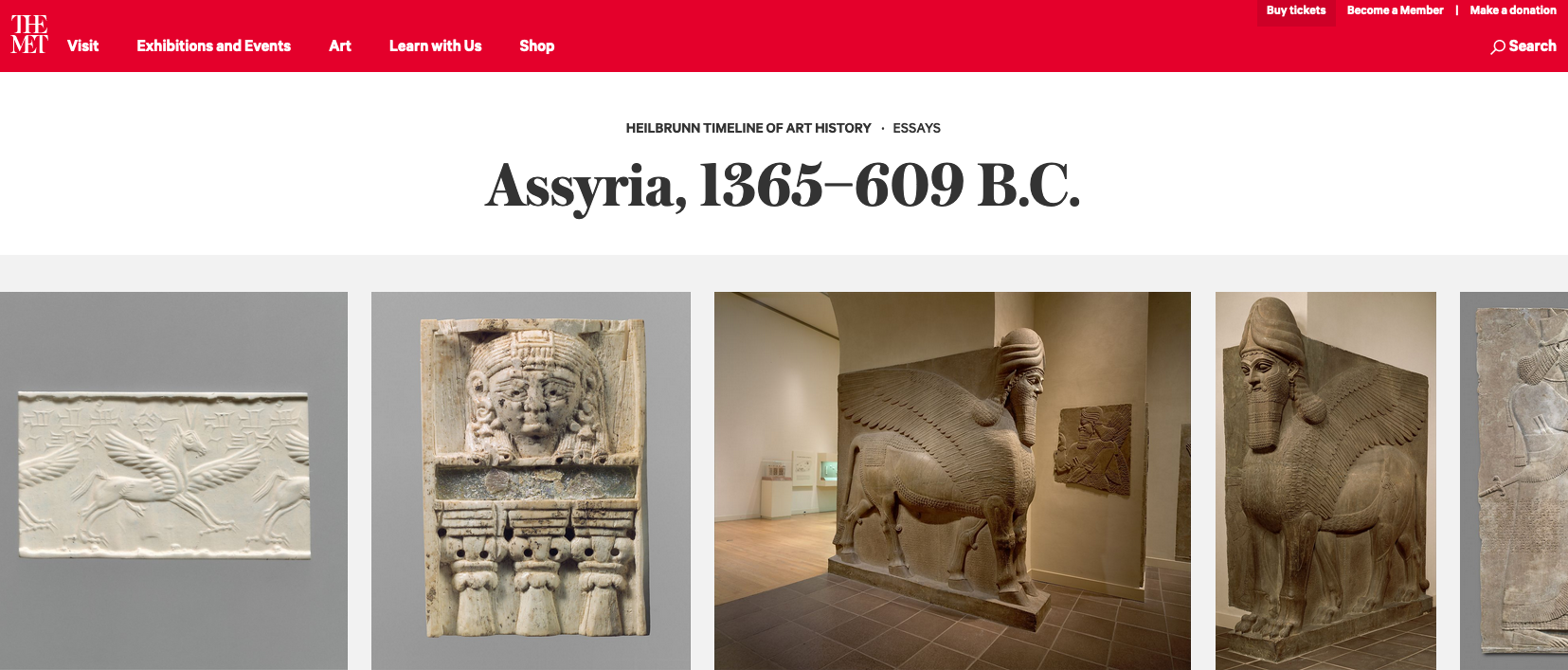
Department of Ancient Near Eastern Art, The Metropolitan Museum of Art
October 2004 (originally published)
April 2010 (last revised)
The ancient city of Ashur (Assur) was located on the west bank of the river Tigris in northern Mesopotamia. Although it had controlled an extensive trading network in the early second millennium B.C. and formed a core area of the empire of Shamshi-Adad I (r. 1813–1781 B.C.), the city had slipped into the shadows in the following centuries.
Middle Assyrian Period
After several centuries of obscurity and even loss of independence from around 1400 B.C. under the powerful northern Mesopotamian state of Mitanni, Assyria’s fortunes revived in the reign of Ashur-uballit I (1365–1330 B.C.). From his capital at Ashur, Ashur-uballit extended Assyrian control over the rich farming lands of Nineveh and Arbela to the north. The new conquests were consolidated by succeeding kings and, under Adad-nirari I (r. 1307–1275 B.C.), the remnants of the state of Mitanni were conquered and Assyrian control stretched to the Euphrates and the borders of the Hittite empire. Assyria reached its greatest extent during this so-called Middle Assyrian period under the warrior king Tukulti-Ninurta I (r. 1244–1208 B.C.), who defeated the ruler of Babylonia to the south and installed puppet kings to govern the region for some thirty-two years. Tukulti-Ninurta established a new royal city on the opposite side of the Tigris from Ashur and named it Kar-Tukulti-Ninurta. Struggles for the throne led to the king’s assassination and a series of short-lived reigns. Nonetheless, apart from the loss of Babylonia, the Assyrian empire did not disintegrate. Under Tiglath-pileser I (r. 1114–1076 B.C.), campaigns were conducted north as far as Lake Van, and the king even journeyed to the Mediterranean, where he received royal gifts. Much campaigning by Tiglath-pileser and succeeding kings was directed against Aramaean pastoralist groups in Syria, some of whom where moving against Assyrian centers. By the end of the second millennium B.C., the Aramaean expansion had resulted in the loss of much Assyrian territory in Upper Mesopotamia. To learn more, click The Met:

